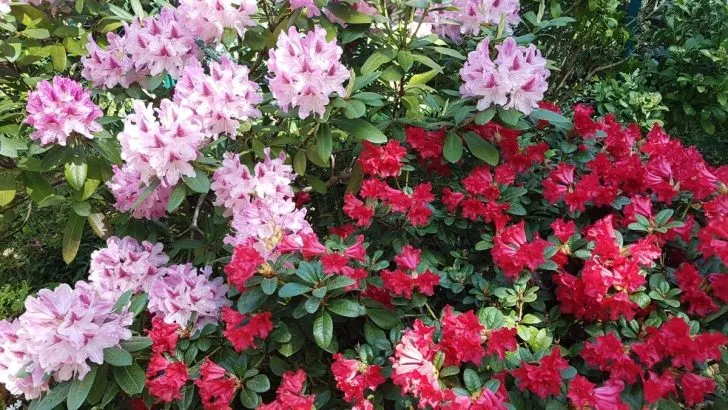Rhododendrons, with their glossy, evergreen leaves, are the garden’s stalwarts, standing shoulder to shoulder with the likes of hydrangeas and peonies. They’re the evergreen charmers that promise to retain a touch of vibrancy, even when the world outside turns gray.
However, caring for these perennial beauties is somewhat akin to handling a temperamental artist; they have specific needs and whims that demand our attention, especially as the fall season sets in. Believe it or not, the TLC you offer—or neglect—during these months can make or break your rhododendrons’ performance come spring.
Ready to dive deep into creating a thriving environment for your rhododendrons? Whether you’re a green-thumb expert or just getting your hands dirty, these practical tips will transform your plants from garden fillers to showstoppers. Let’s make those blooms the envy of the block!
Perfect Placement: Your Rhododendron’s Stage
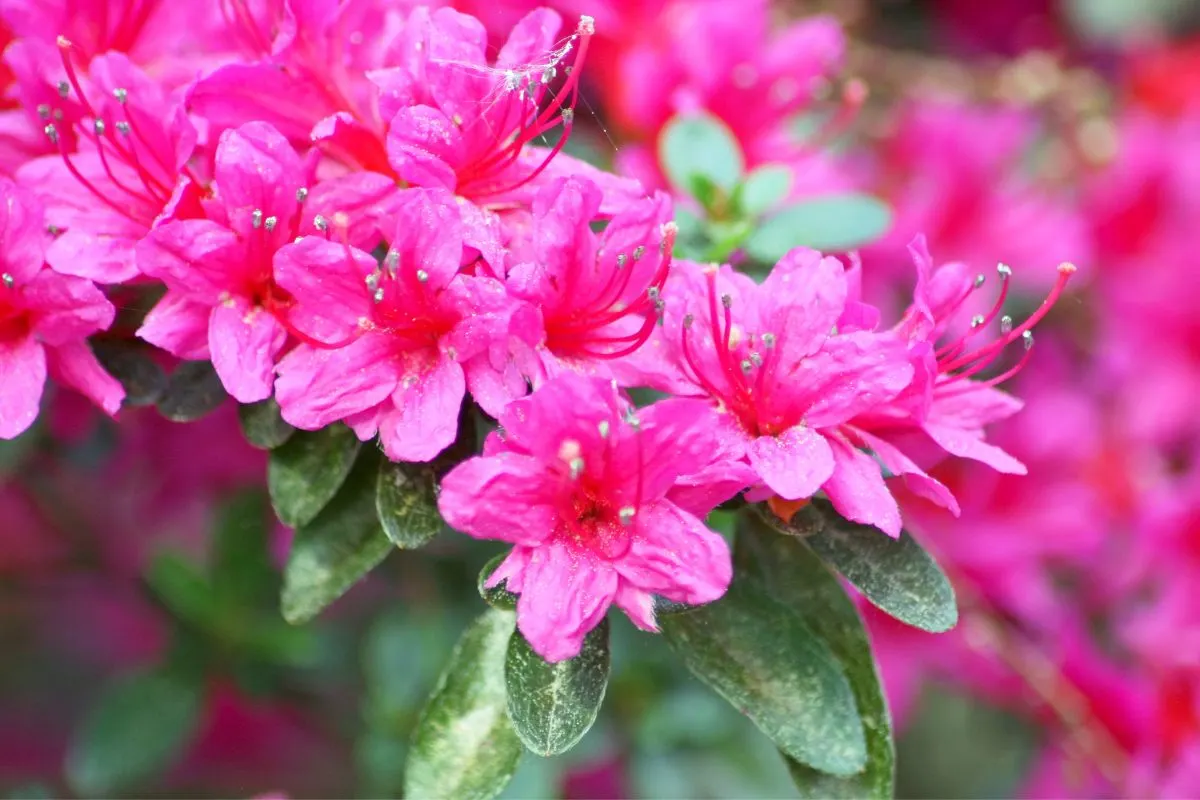
The golden rule for cultivating rhododendrons is all about location, location, location. These beauties aren’t fans of the spotlight — they thrive in dappled shade, much like their relatives, the azaleas.
Think of it as setting a delicate scene for a theatrical performance; you wouldn’t place the lead actor in the blazing light, and neither should you expose your rhododendron to the relentless sun.
In addition to indirect light, these plants are fans of slightly acidic, well-draining soil. This is their version of a plush stage setting.
If your rhododendrons aren’t putting on the show you expected, despite meeting their basic requirements, it might be time to reassess your care strategy, particularly in the fall. Let’s delve into what these finicky performers really need to thrive.
It’s all about creating the right backdrop. When you’ve set the perfect scene, your rhododendrons will reward you with robust health and vibrant blooms. Let’s make sure your garden sets the stage for a blooming success!
Essential Autumn Care for Rhododendrons
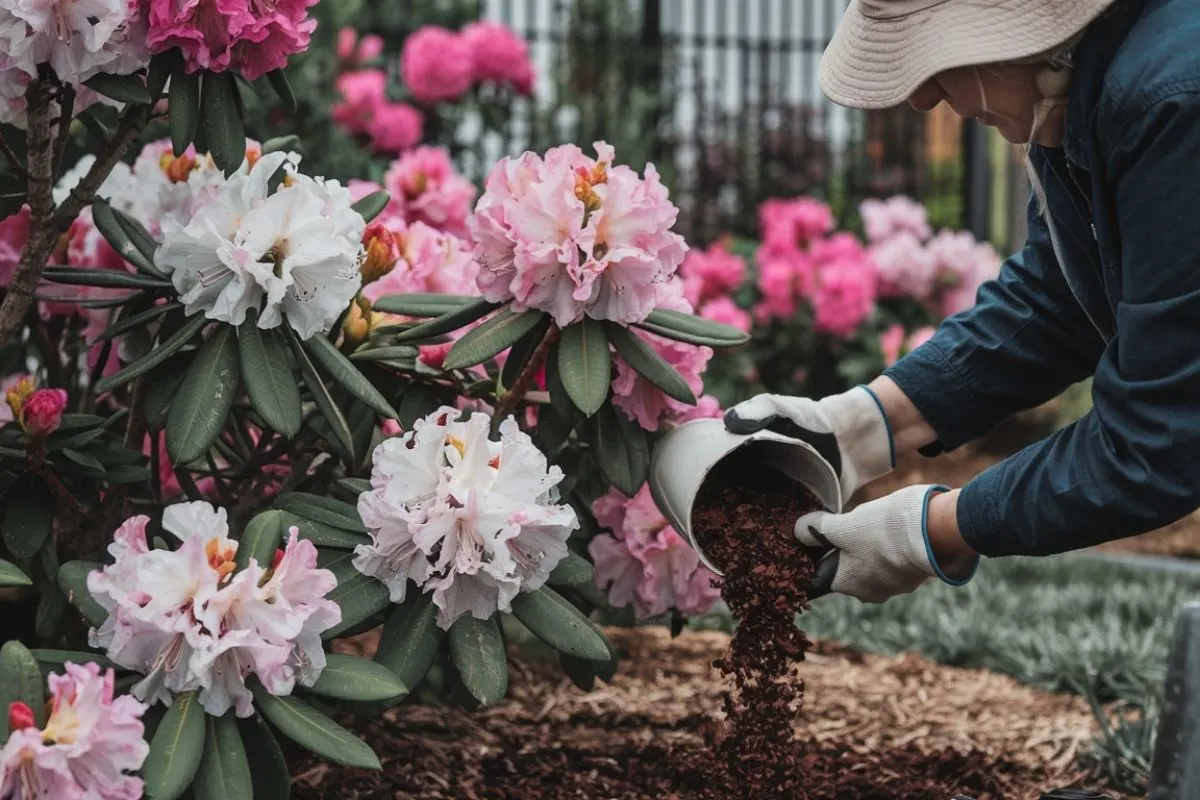
Channeling your inner stylist with pruning shears around your rhododendrons this fall? It might be wiser to step back. While tidying up can be tempting, fall is not the right time for a trim.
Pruning now can stress the plants, making them susceptible to winter’s harsh embrace. Imagine stepping out with a fresh haircut just before a blizzard—it sounds as uncomfortable as it is for your plants!
When you prune in the fall, your plants direct energy towards recovery instead of storing reserves for the long, cold months ahead. Any new shoots spurred by a premature haircut are vulnerable to frost damage, which can further drain the plant’s energy come spring.
Therefore, it’s best to let your rhododendrons conserve their strength for when they really need it. Save the pruning for early spring, once the frost has bid adieu, allowing your plants to bounce back naturally.
Avoiding fall pruning means your rhododendrons won’t expend unnecessary energy and can instead focus on surviving the winter in peak condition. Let them rest, and prepare to unleash your inner gardener when the world begins to thaw.
Hydration is Key: The Vital Role of Fall Watering
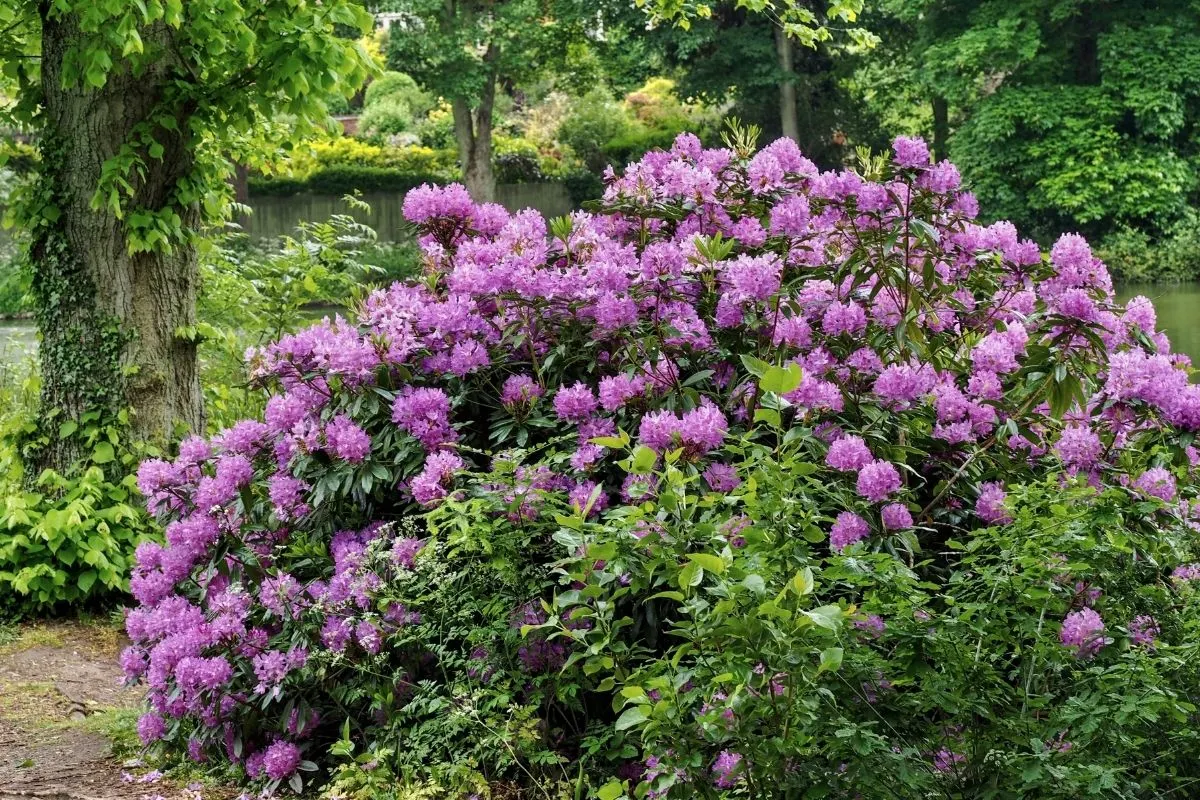
Even though your rhododendrons won’t be as thirsty as during the peak of summer, maintaining proper hydration in fall is essential. Picture it as a traveler filling their canteen before embarking on a long winter journey—it’s all about preparation.
Autumn sometimes brings dry spells, which can silently sap the soil of moisture. Out of sight shouldn’t mean out of mind—your rhododendrons are quietly storing energy for future growth.
Ensure they receive 1 to 1.5 inches of water weekly, which you can achieve using a soaker hose or a gently trickling garden hose aimed directly at the roots.
Consistent watering not only helps your plants stay hydrated but also prepares them to tackle the colder months. Remember, a little care now can lead to a cascade of blooms later.
Mulch Magic: A Cozy Cover for Rhododendrons
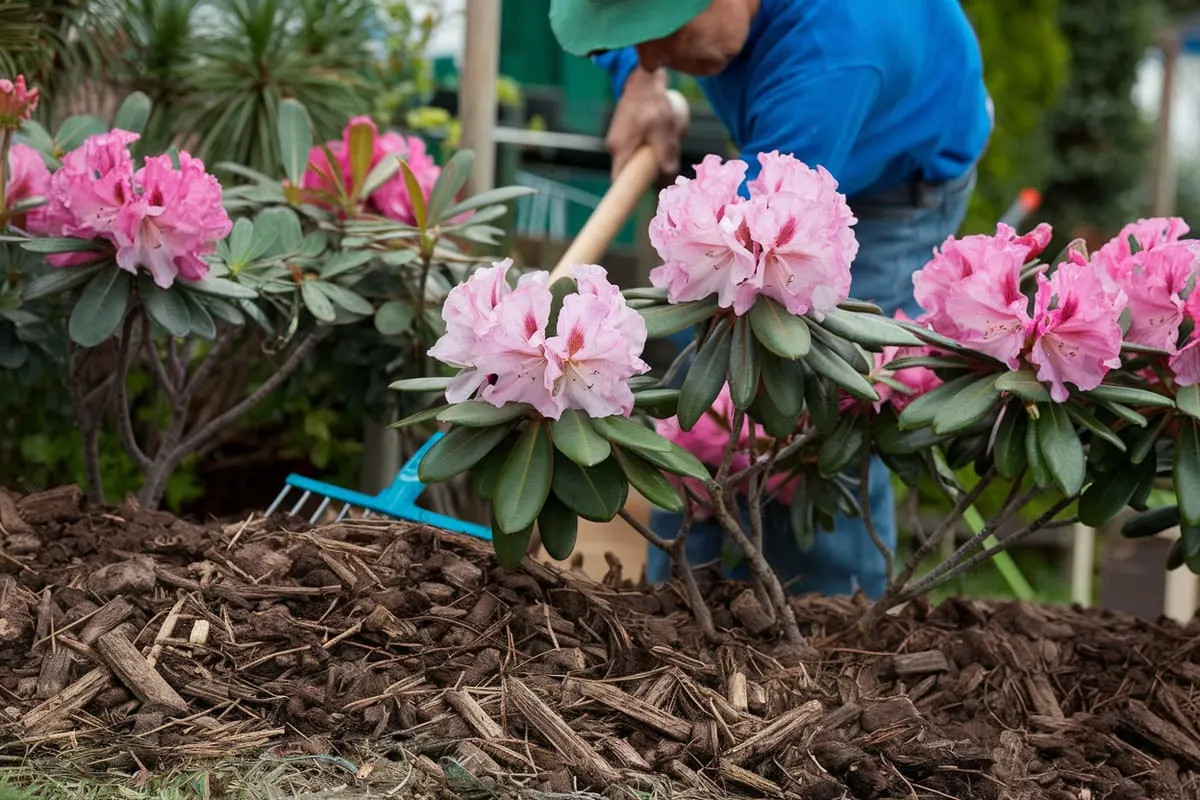
Think of mulching as snuggling your rhododendrons under a warm, protective blanket. Mulch is a gardener’s ally, playing a crucial role in conserving soil moisture, warding off weeds, and shielding tender roots from the cold’s harsh touch.
This fall, layer 4 to 6 inches of mulch around your rhododendrons while the soil retains warmth. Consider it a thermal cushion that tempers the soil temperature, mitigating the freeze-thaw cycles that can disrupt root stability. This snug environment allows your plants to adjust gently to the approaching chill.
With proper mulching, you’re not only keeping your rhododendrons cozy, but you’re also ensuring they have a stable ground to grow when spring arrives. It’s nature’s way of giving them a little extra love.
Skip the Fall Fertilizer
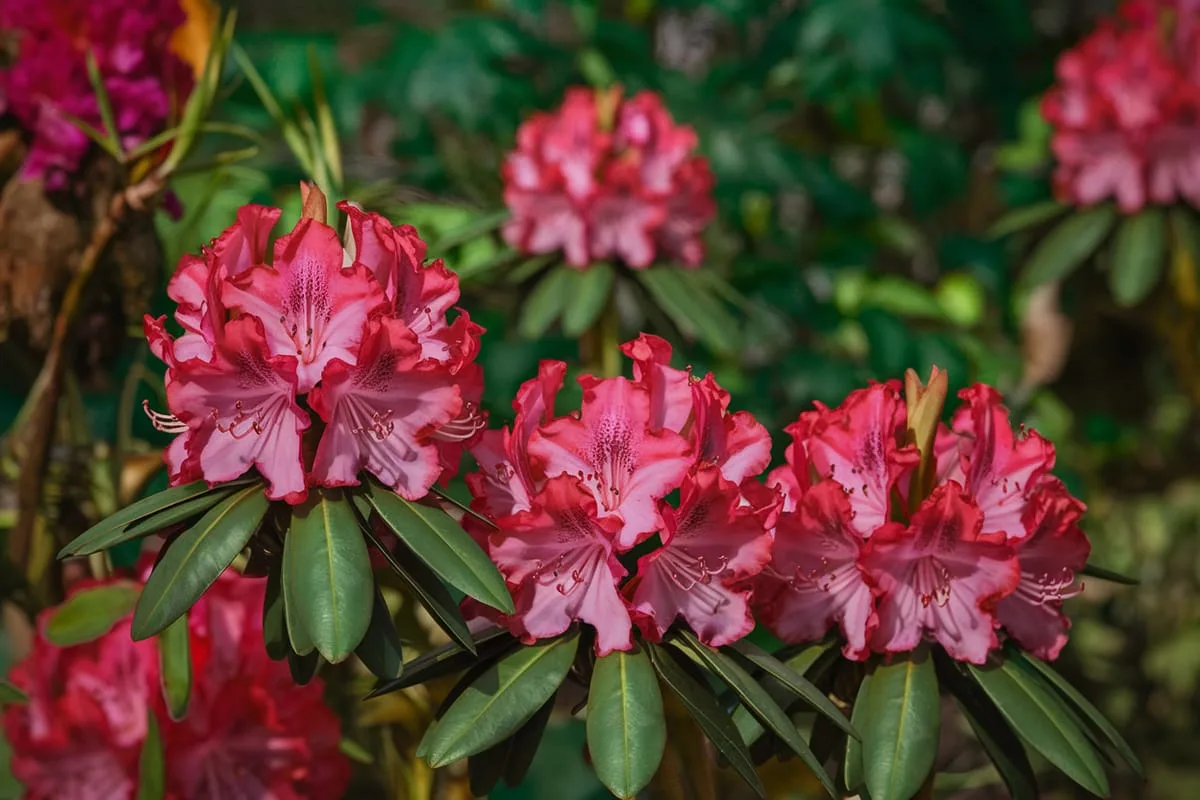
Hold off on fertilizing your rhododendrons during the fall season. Fertilizer acts like a jolt of caffeine, and the last thing you want is your plants revving up for growth just before winter. Any new growth could be frost-nipped, possibly harming the entire plant.
Conserve your fertilizing efforts for springtime, when your rhododendrons begin to awaken from their winter dormancy and are ready to bloom. Choose a fertilizer specifically formulated for acid-loving plants to provide the right nutrients essential for their growth.
Postponing fertilization until spring ensures your rhododendrons receive the nutrients they need, exactly when they’re poised for their seasonal flourish. It’s all about timing.
A Comprehensive Fall Checklist for Rhododendron Care
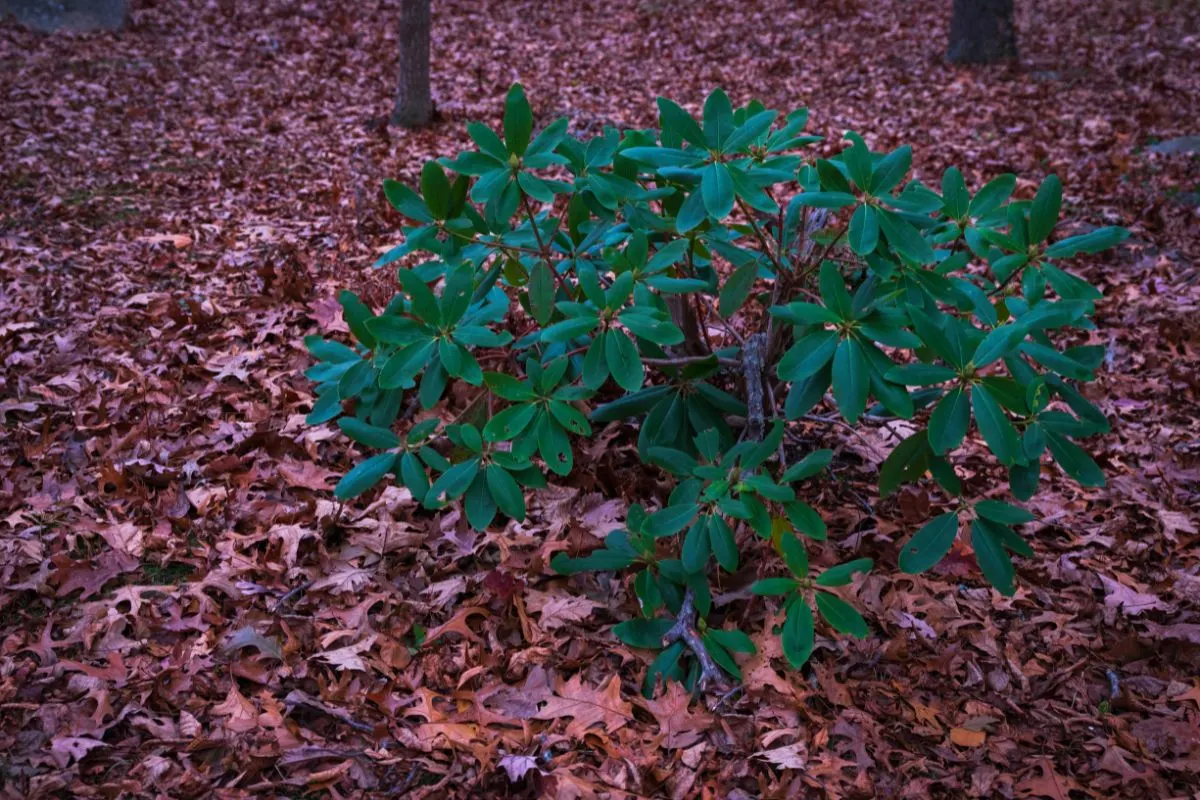
Proper fall care for rhododendrons is a balancing act. Steer clear of pruning and fertilizing; instead, focus your energies on consistent watering and strategic mulching.
By following these guidelines, you’ll be paving the way for a spectacular floral display in spring. Go forth with confidence, fellow gardeners, and provide your rhododendrons with the attentive care they deserve during these crucial months. Until we meet again, happy gardening!

